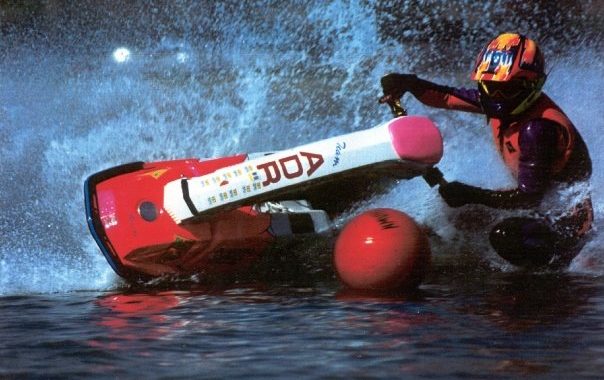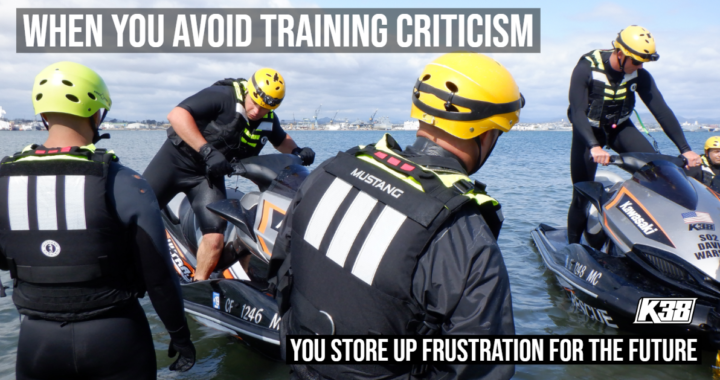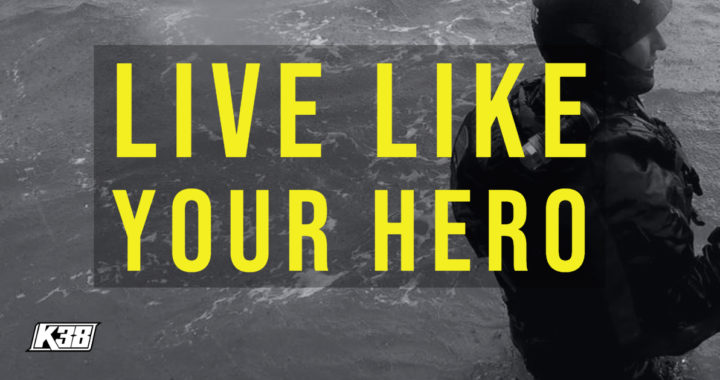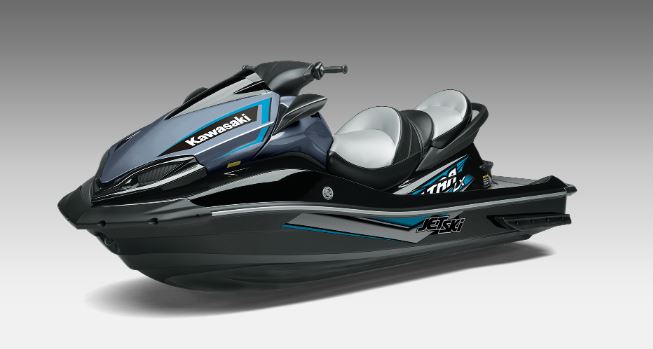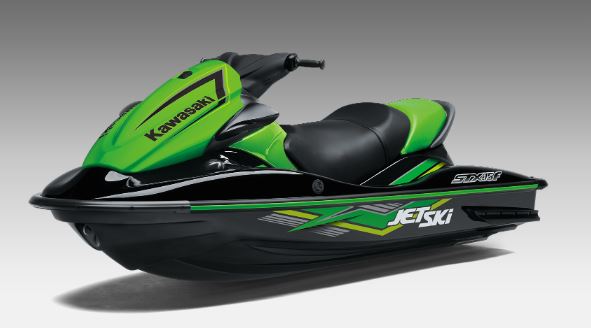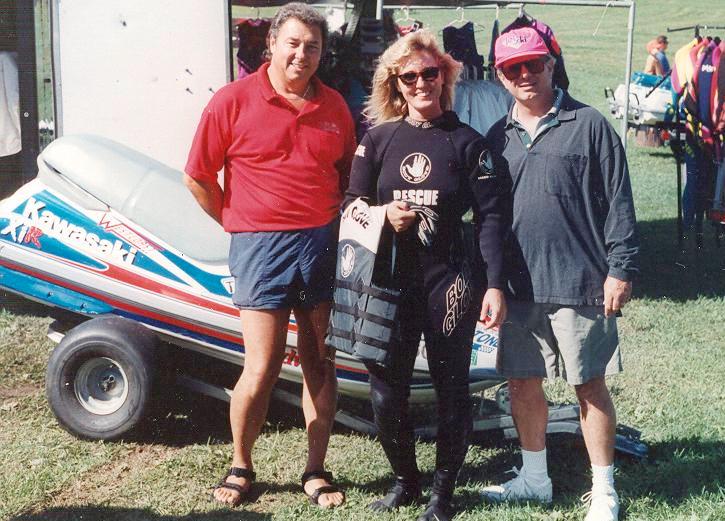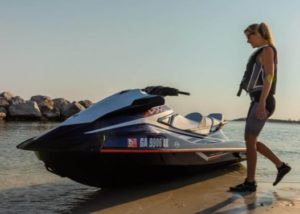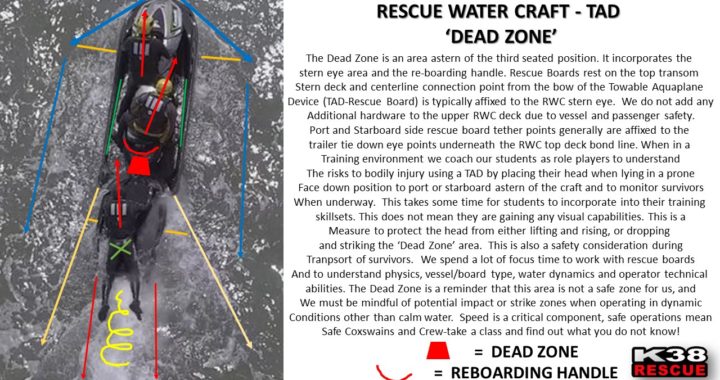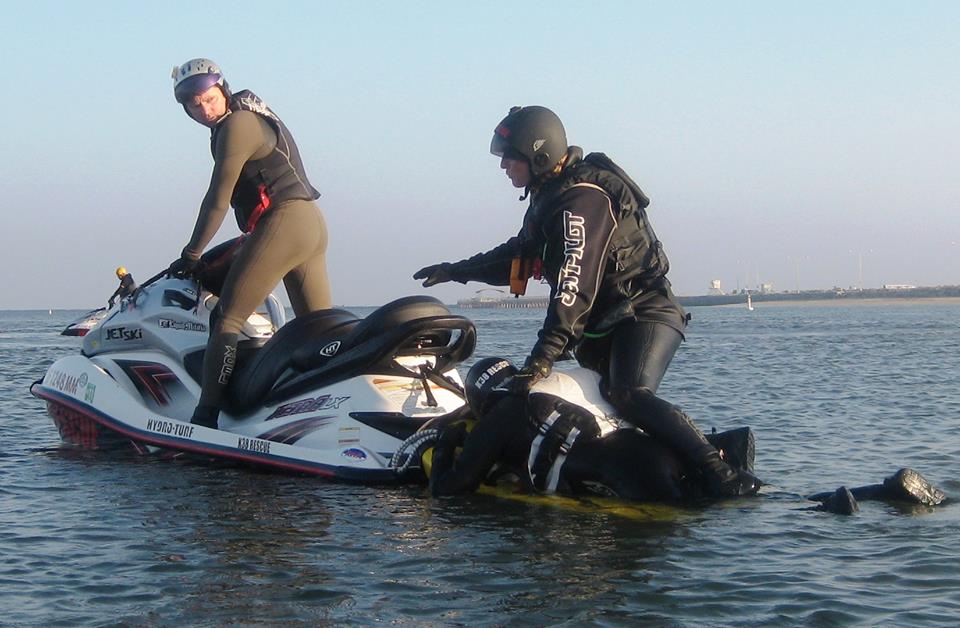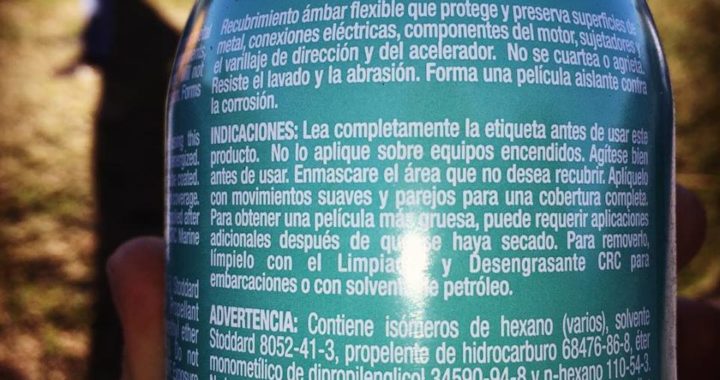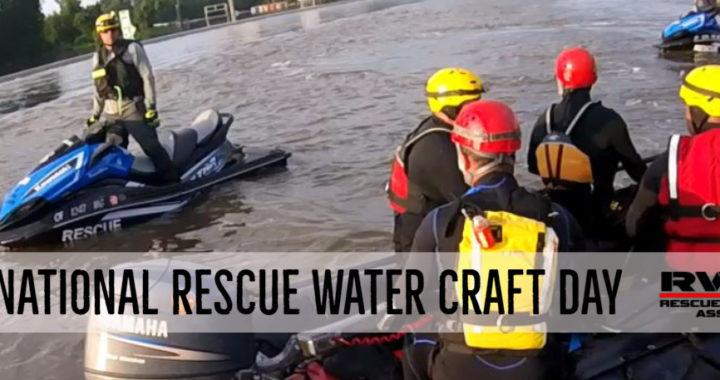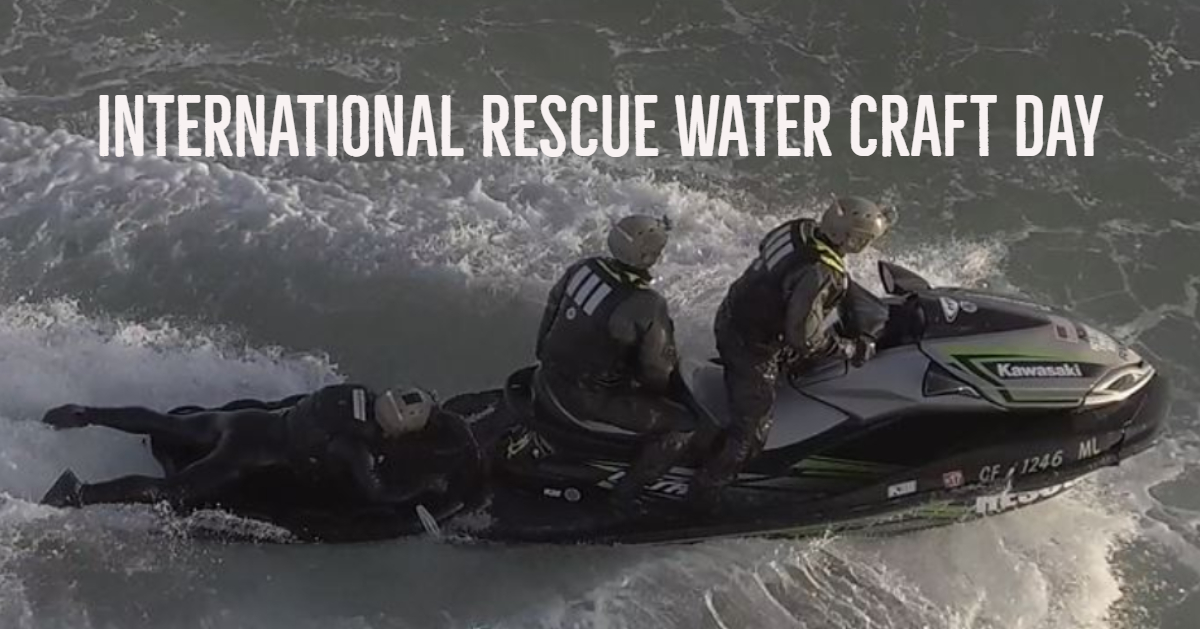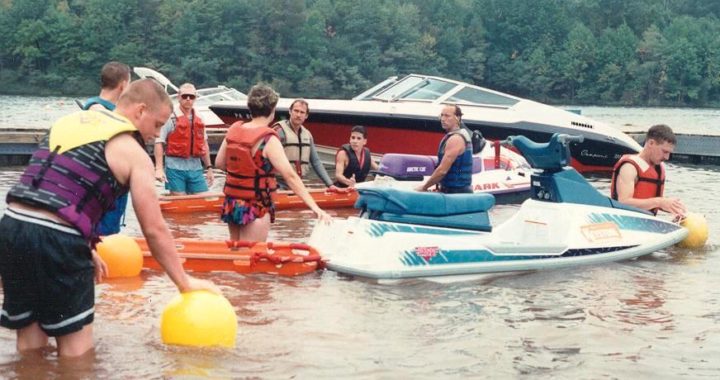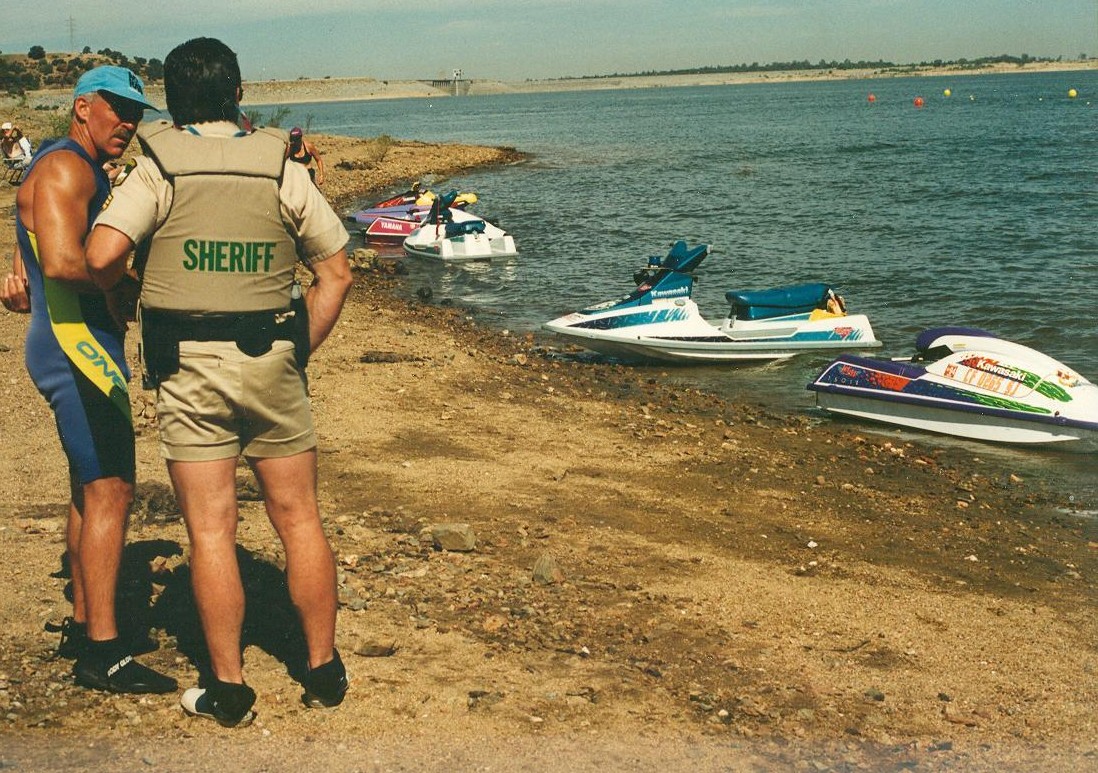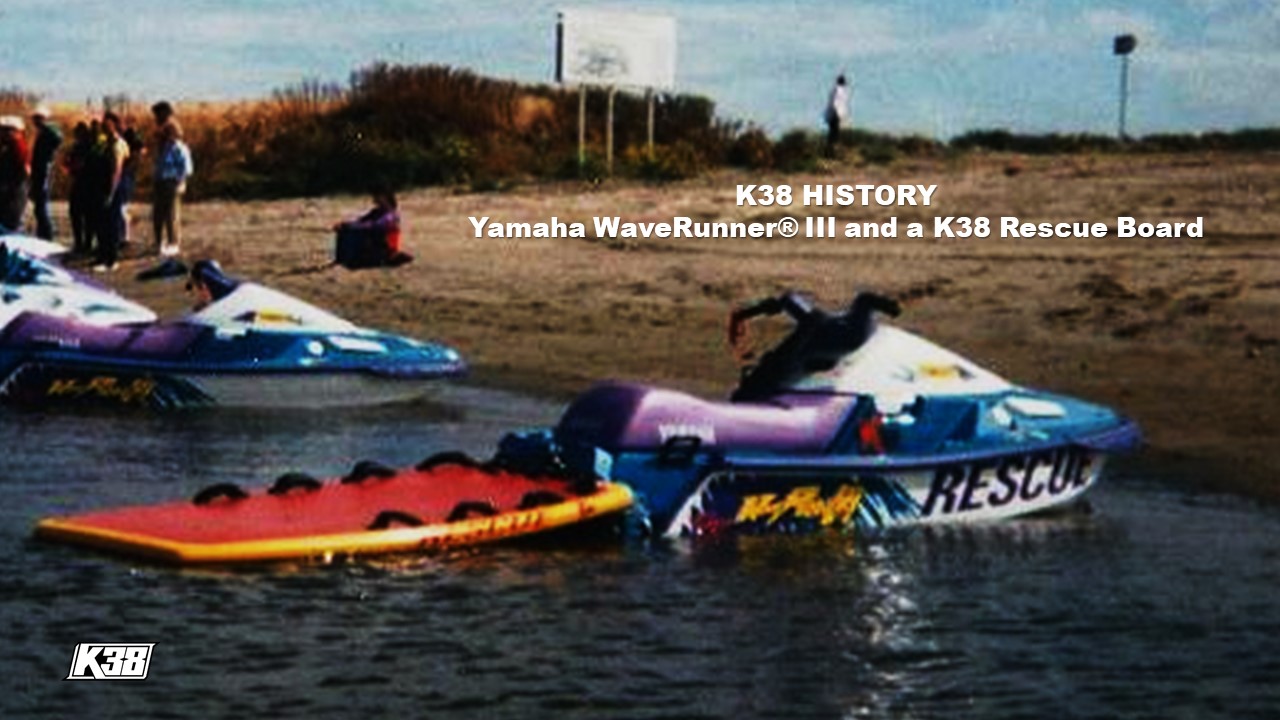RED FLAG WARNING
I was racing at Long Beach at the Marine Stadium with the world’s greatest Jet Skiers. Many of my friends know this place well as first generation Jet Skiers; that was our hallowed ground for RPM loads! We all have race stories. This is one that helped me climb the ladder we call life.
To be on a track during that time was high energy! The competitive spirit and drive was a birthplace of everything that came after in Personal Water Craft racing.
New engines, pipes, pumps, anything you can think of was being engineered, designed and tested, curiosity was a fever. Development was a weekly high. This was part of the Jet Ski Fever.
I was a weekend stand up Jet Ski® racer; meaning I was a mother first, had my own business and was working hard to get the time and funds to compete on the weekends. And how we raced!
We had qualifiers, heats, last chance qualifiers and main events. Easily up to 50 women would vie for the limited top positions for the mains. Every main event was earned.
Racers with amazing talent across the nation would drive hundreds to thousands of miles to compare themselves to others. They represented 50% of the equation, the powerhouse gamble was their custom build and race teams.
Women were on these tracks. Lots of women!
These women opened the door for motorsports. They are Jet Ski icons and mavens. They gave a gift to this generation that should be determined in honor and gratitude.
Some day this current generation of female racers needs to do the same for those coming up behind them and we encourage them increase and not decrease the worth of our efforts. We gave a lot to this sport for 'future generations'.
We determine this to represent a code of honor for racing to rest upon. And for those who built it before me, I thank you.
Prominent Race Names come to mind:
Brenda Burns, Celeste Peterson, Bonnie Burns (Brenda's mother), Kelly Koster, Bonnie Gordon, and Cindy Coffman.
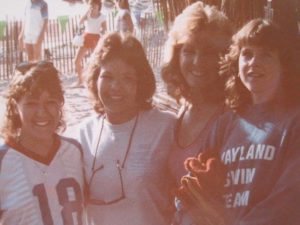
There was a race every weekend in California. BC Racing was our Region 1 promoter and I would enter 4-5 events. Whatever they had to offer I signed up: freestyle, closed course, obstacle, slalom and the gran prix (long distance).
My Jet Ski® was salvation. It kept me sane with the hectic pace of life I adopted as an adult juggling a lot of responsibilities. This was therapy for me. My Jet Ski® taught me about myself, racing was the delivery of tempered emotions, responsibility and dedication.
This was my right of passage. Mentorship came from those on the sides; my husband, my daughters my race mechanic, a variety of great holders and Kawasaki Motors Corporation and finally the IJSBA and it’s promoters. Those promoters worked very hard to put on their events. Even harder today with the reduced participant numbers.
Interesting fact which is the basis of this story. I did the first leg drag at the BC race at the marine stadium for us gals in my division. I was just starting to get into a race groove regionally.
At this race I had the pole position on the start in the main I had earned through the qualifiers.
The week prior I had been practicing the leg drag at WOT and got really good with it. I was competent and strong. I decided to use it in the next race. The men had been doing this for a while and I aspired to race like they did because I admire their power and aggressive drive.
It is race day, I'm on the pole. I get a fair start.
We are heading to the first turn buoy pretty much lined up in a stack off my starboard side. I will take advantage of the pivot on this turn to get the clean water ahead. I feel good.
I throw out my left foot and start the pivot to drag my foot on WOT.. However.......with that being said...........
When a leg drag is thrown the subsequent pitch of the hull offsets the flat bottom and makes a V off the gunwale angle. And guess what? Planing with a deep vee on a sharp edge throws a significant plume of whitewater like a garden hose. Yup, that’s' what it does on a stand up.
The first four riders closest to my starboard side, the first inside racer freaks from the water which I believe they thought I fell (appropriate assumption and a fearful one in a first turn). It's not fun having a blast of water at speed hit your face. This is blind faith to negotiate through streams of water.
Fear of getting hit on the first turn buoy and the next 5 are the highest risk of the race. Positions are challenged with skill and horsepower. Contact with another Personal Water Craft is a legitimate fear. It's real, people have died on race tracks.
Instead of holding their line and braving the turn, they turn sharply to their right and create a 4 boat pile up. I race away into beautiful glass water ahead and negotiate 2 more turn buoys to be faced with a red flag coming at me by a pursuing head on Course Marshal. It was probably Brad Southworth haha.
MINDSET
My happiness and joy I experienced for throwing down a foot was replaced instead by the color of danger. Red was my punishment.
My historic maneuver was diminished in disgrace and my pride slipped away. I was shocked. What the heck happened? Everything was perfect on that first turn! I didn't push anyone! I felt pigeonholed; men would never be given a red flag for a leg drag on the first turn! The guy who pushed the pack however would be! Rats! Suck it up Shawn, own it.
I track back towards the starting line wondering what happened and how that crash happened since it was behind me and not in front of me, I had no idea. I reset my mindset to get back on the track in my head and make a repeat stellar performance. I am not hoping for this. I want the win. Goals!
I get on the line with my holder and the rest of the racers recollect. The Course Marshal drives up to my pole position and places his hand to his head and taps it. What? What? He points to me! What? Nobody else?
I have been assessed the penalty on the start! I received this due to my fellow female racers not ready for the change and pushing through the risk. Which is not easy in a motorsport.
I was ready. It was time we climb one more rung in the race ladder. Change does not come easy or with acceptance, it comes from friction against the status quo.
I have 30 seconds to figure this out and not dwell on disappointment. My holder walks away. Dead start with no holder and a hand on my head signals absolute defeat. It is obvious I'm in a pinch. I am not going to waste the money I invested.
There is a level of shame involved in being the recipient of an infraction, sometimes it's worthy. It’s usually temporary because racing has no place for emotions, feelings are distractions. Racing only has a podium that dominates the waterspace.
Everyone there knows it’s me, I'm the one to dispute. There is no way to protest. 'Racer's fire up your engines'; so helmet down, refocus. Have fun and ride smart.
Spectators love drama, crashes and negativity.
Race teams like winning. These spectacles are to revel in the disaster by enjoying the setback one experiences.
This is the gladiator in the coliseum and we are all mere entertainment. People prefer damage to success. Essentially, we reduce this to one word ‘drama’.
Feeding drama is pointless and a distraction to race success.
Races have lots of drama. I decline to participate. It's back to the rule book and what it says for dead engine starts.
I have no holder now. I am alone on the start line standing in hip deep water. My fellow sister racers are all on game with their pumps out of the water revving up their pipes red hot. Damn! That sound is beautiful!
It wakes me up and I smile, I love that compression sound. That is why I am here.
They load their boats into the water for their final push and level out the hull as their holders strains to control their crafts straight, their heads are tucked and ready to battle the first turn.
DEAD LAST
I look over at them in their game. I notice the first four to my right. They are intent on the first turn buoy and not distracted. They are waiting for the Course Marshal to turn the card. The hold their breath waiting for the band to snap. Boats are fully loaded.
I make a decision that I will meet them on the track and dominate their track lines. I will pass every single one of them I tell myself. That is my goal. I am going to let myself go.
I thank them for my race ahead. In my mind I run a quick win on fast forward.
The rubber band snaps. They are off on that wonderful ‘wot wot wot’ sound with the tell-tale whitewash that is the signature of thrust and super stock power.
As they race away, I start my Jet Ski loaded sideways on my hip to not overload the back pressure of the exhaust and drop the hull into the water.
I pull my throttle drawing a left knee into the tray, I stand up and tuck down and I pin it to win it. I’m tracking over their wonderful trailing jet wash wakes. I race as if there are 11 race boats at my side.
They have all crossed the first inside line buoy and are fighting for the hierarchy structure on the track.
I ride my race on my terms. I unleash permission and I let my race boat do its job. I don’t interfere. I let my boat do all the work and I stay in step with it. My breathing is calm and steady.
I am in that space of wonder. That internal mind. That hidden area that is given permission to awake where before slumber was comfortable and convenient in the middle of the pack.
The track is tight, with a lot of buoy turns and laps. I pick off every single racer on the track one by one. I win the race. From dead last I was number 1.
I knew I was going to win that race. In my mind, I had won that race before I started the boat. I cannot say that about any other race I had been in prior to this one.
I am a bit surprised honestly I am doing this. I never imagined I would pass this many race boats or even have the talent to do so, let alone competitive horsepower.
I won that race because of my sister racers. They also won with me.
If that call was not made against me, I would not have tapped into the hidden mind of permission. It was this race that I became an Apex Predator. I finally figured it out in my head! But it took the color of red to guide me and a failure.
I learned from that race a valuable lesson: Give Yourself Permission
This lesson is mindset through spirit. I teach this capability to my Rescue Water Craft students. One must wnat it and not be afraid to succeed.
It can be used for anything in life. Not everyone has it or wants it. This is something developed inside the internal will of a human who has a hunger for greatness. It is a passage.
My sister racers are my champions. They are my personal race heroes.
Without them I would be nothing. With them I am something.
They are part of my team, not adversaries. If we are not pushing one another towards greatness we are holding one another back and that my dear friends is the most selfish act of all in competition.
Keep in mind that we also had up to 4 log jumps and sometimes mini ramps on the closed course race track. Not like today where race tracks have reduced women's stand-up racing to a token of risk in a reverse discrimination against everything us first generation racers fought for. And loved!
We weren't afraid of ramp jumps or log jumps, they were equalizers of talent just like the slalom event.
Racing today is a fragment of the raw excitement it used to be. We can thank promoters and track design for that disaster. Runabouts do not belong on our closed course tracks. Yes, quote me because evidence is my master and it should be yours as well. And the evidence does not lie, but people do.
Runabouts are best suited for endurance and offshore race events due to mass weight, distance of travel and speed vs risk and safety. I'll save that for another story.
Moral of my race story:
Racing isn’t fair and neither is life.
We earn our effort and sometimes it’s taken away. But we keep on keeping on.
We respect our competitors and honor them.
They are us and we are them.
______________________
Posted: June 23, 2019
Content Creator of Rescue Water Craft and Personal Water Craft boating international education standards: Shawn Alladio is the world’s foremost authority and leading subject matter expert. She cares most about her community and the culture surrounding the safety of event service providers and Rescue Water Craft operators, working hard and dedicated towards protecting their reputation, distributing safety information and continuing to train these amazing individuals to the highest standards of care.
__________
Have any questions? Join the Rescue Water Craft Association
and discover what your community is doing to modernize standards, safety and reduce liability!
Join the Rescue Water Craft Association
Use at your own risk. Please take a qualified Rescue Water Craft training course and maintain proper records and respect all the PWC, RWC, PPE, and gear OEM manufacturer warning labels and cautions.
